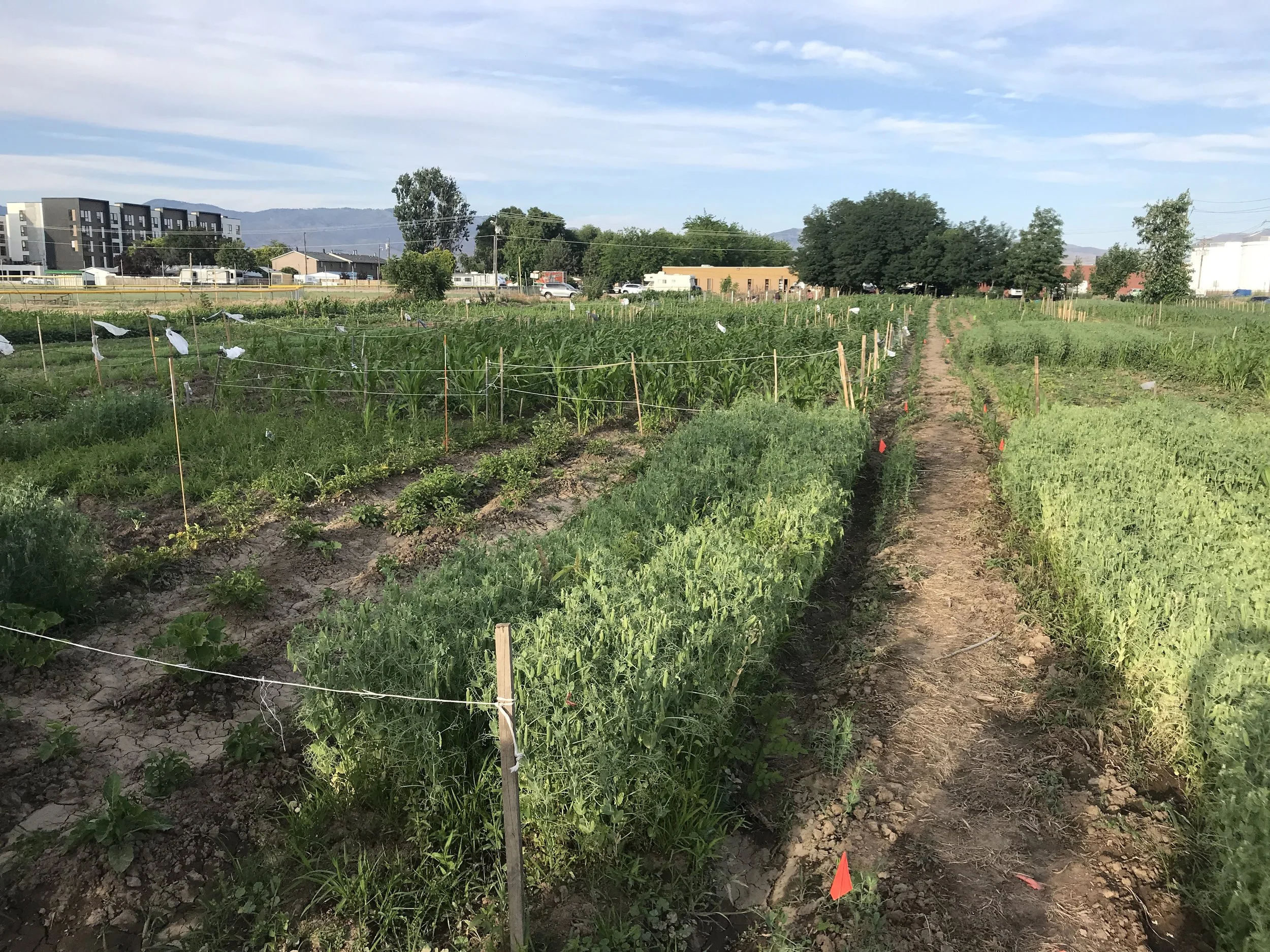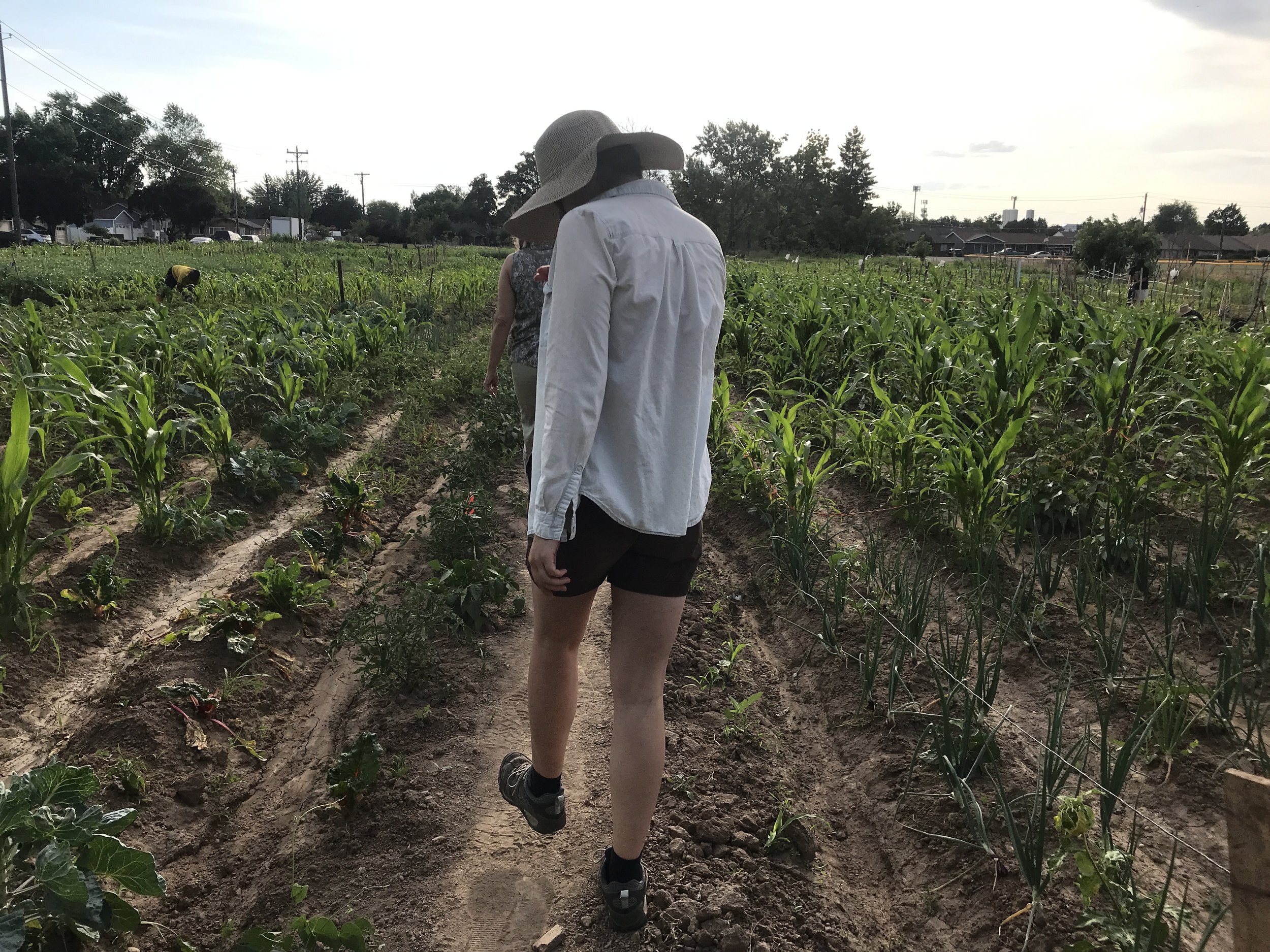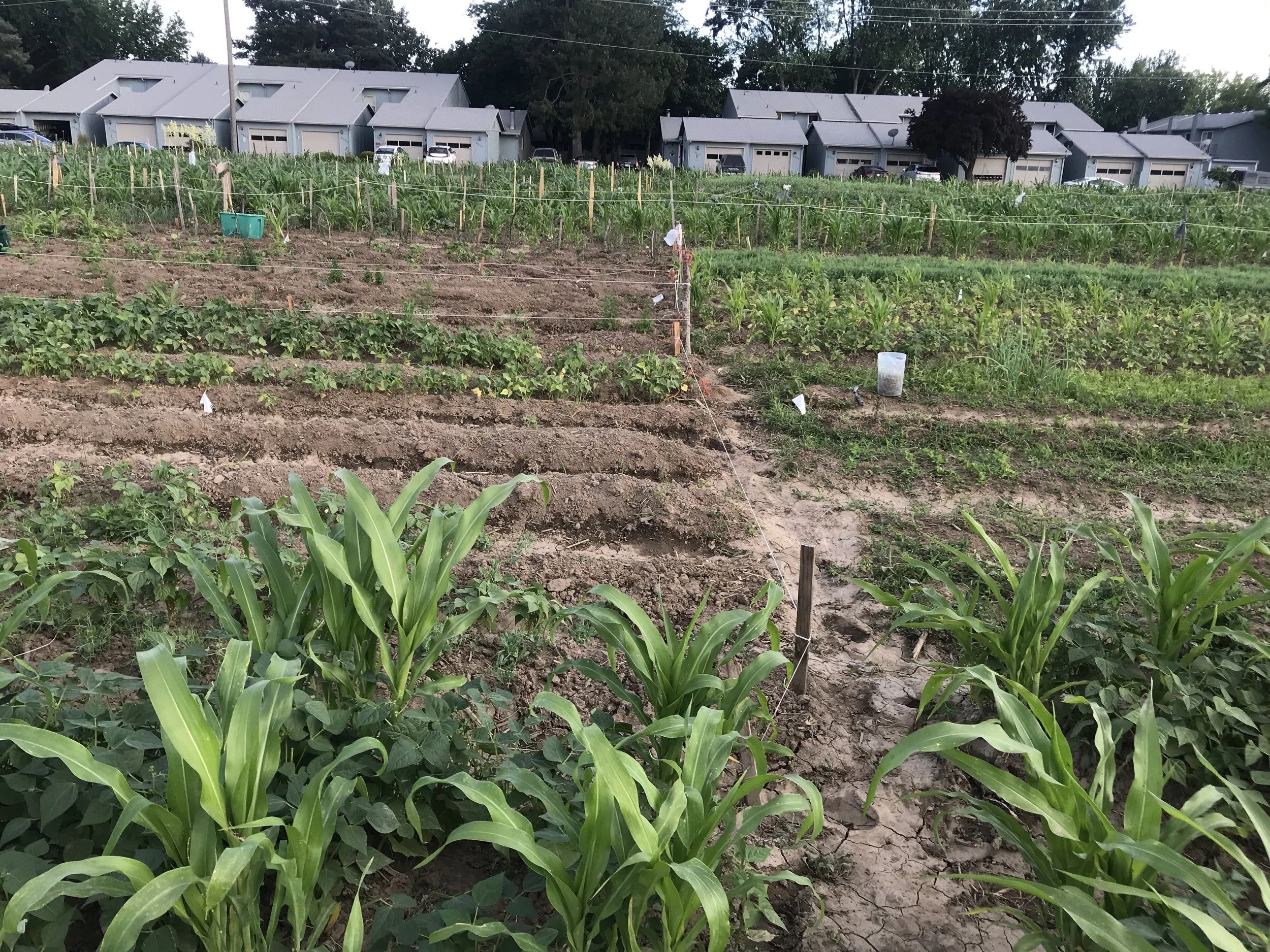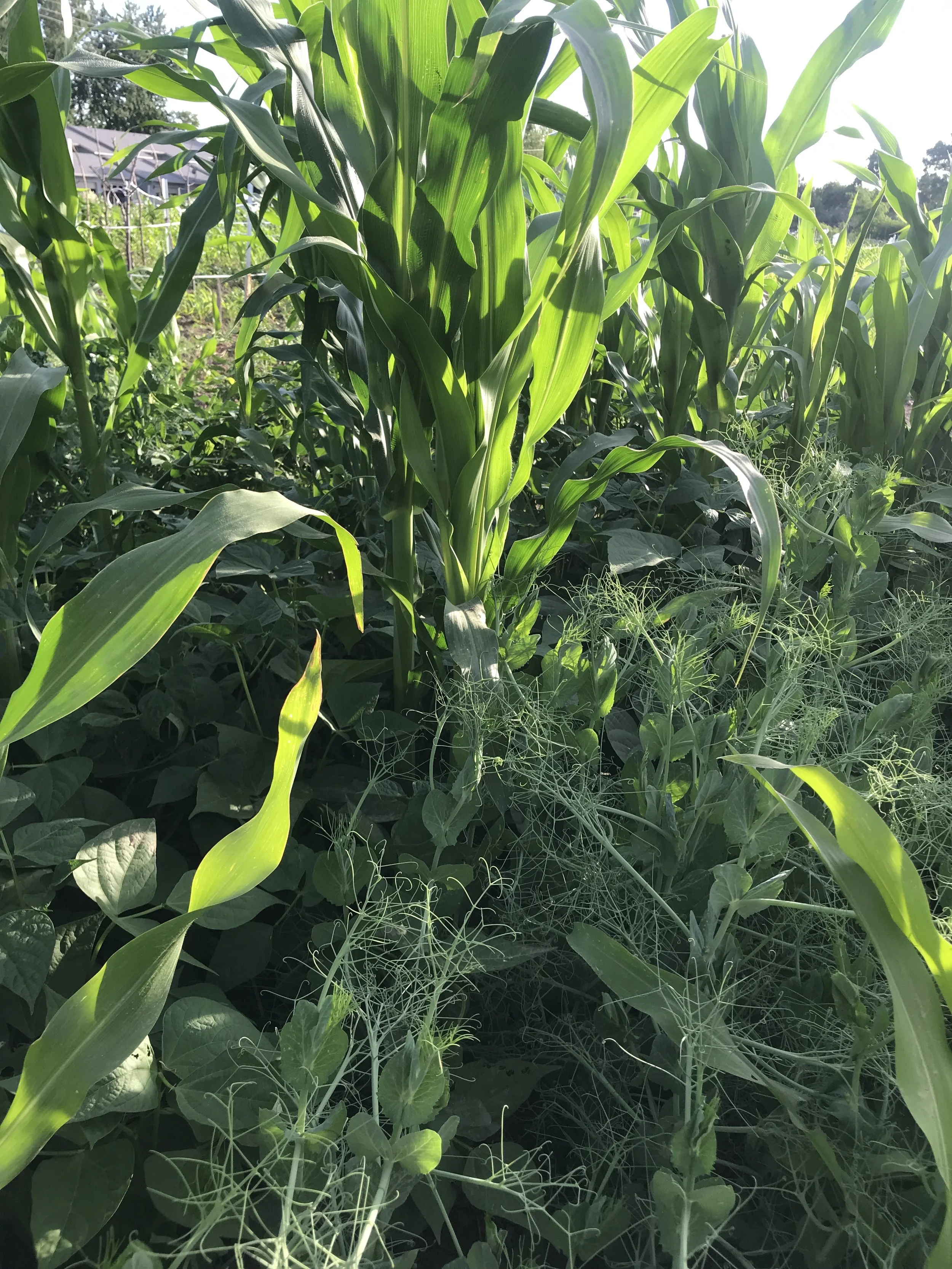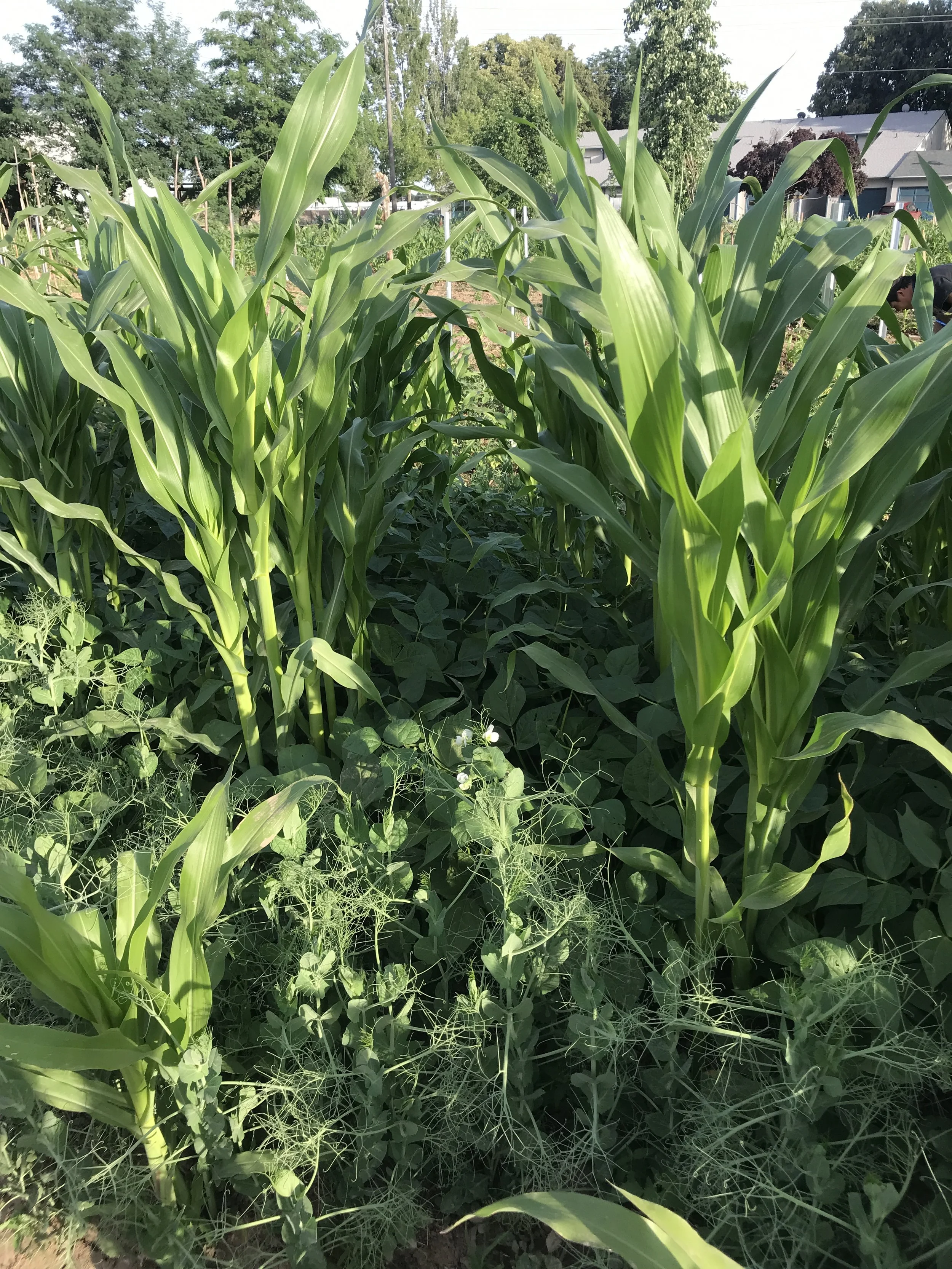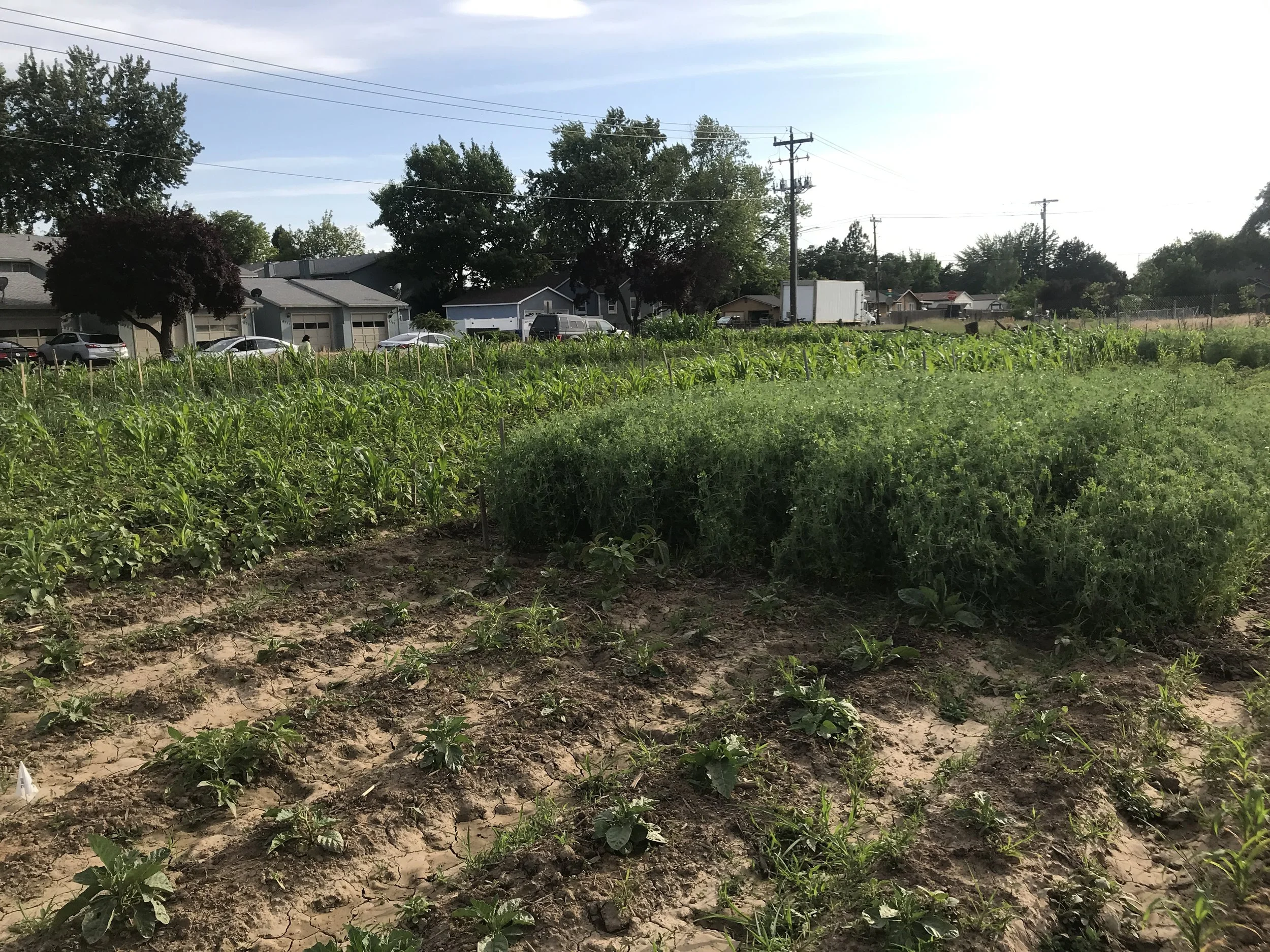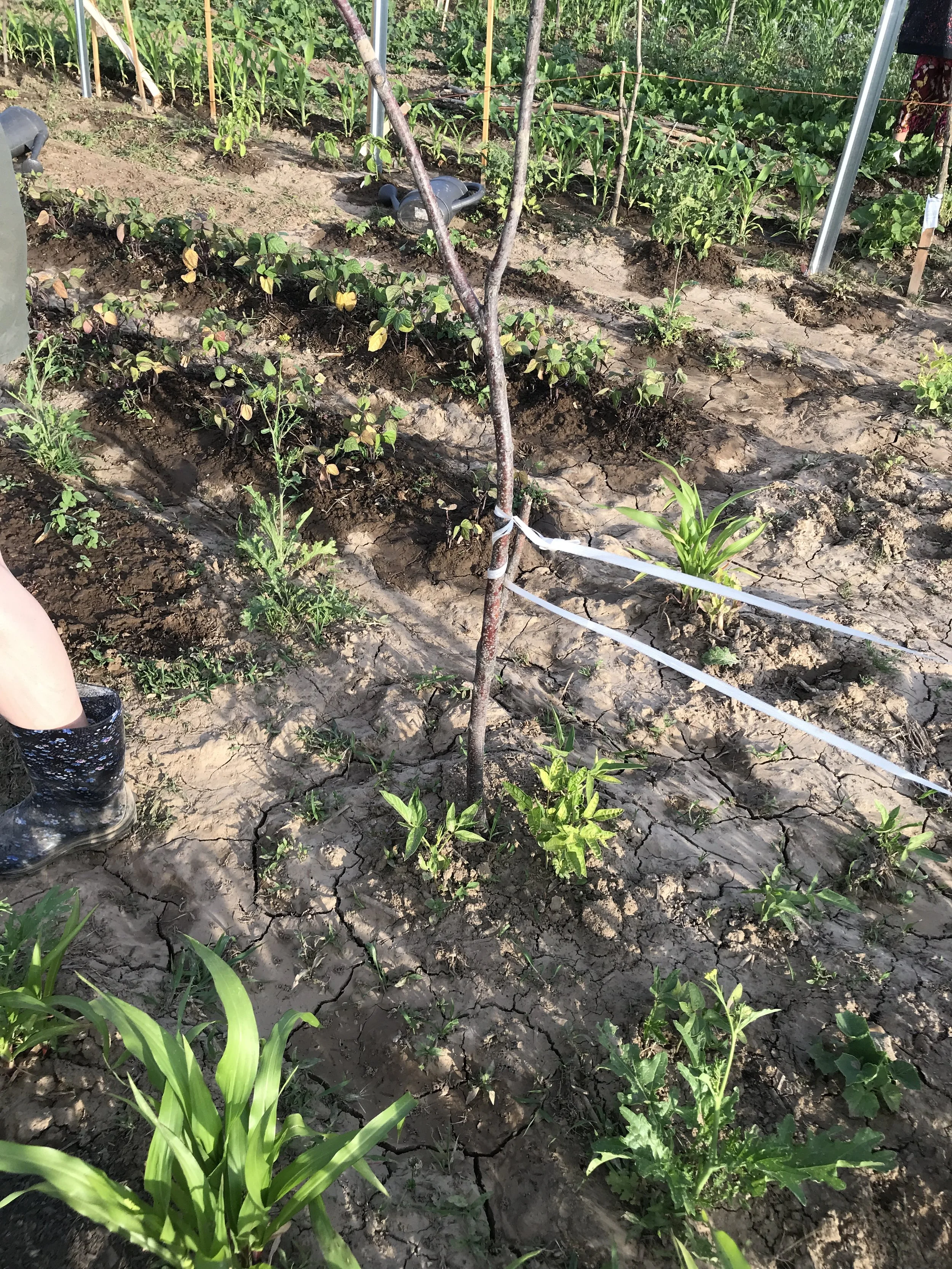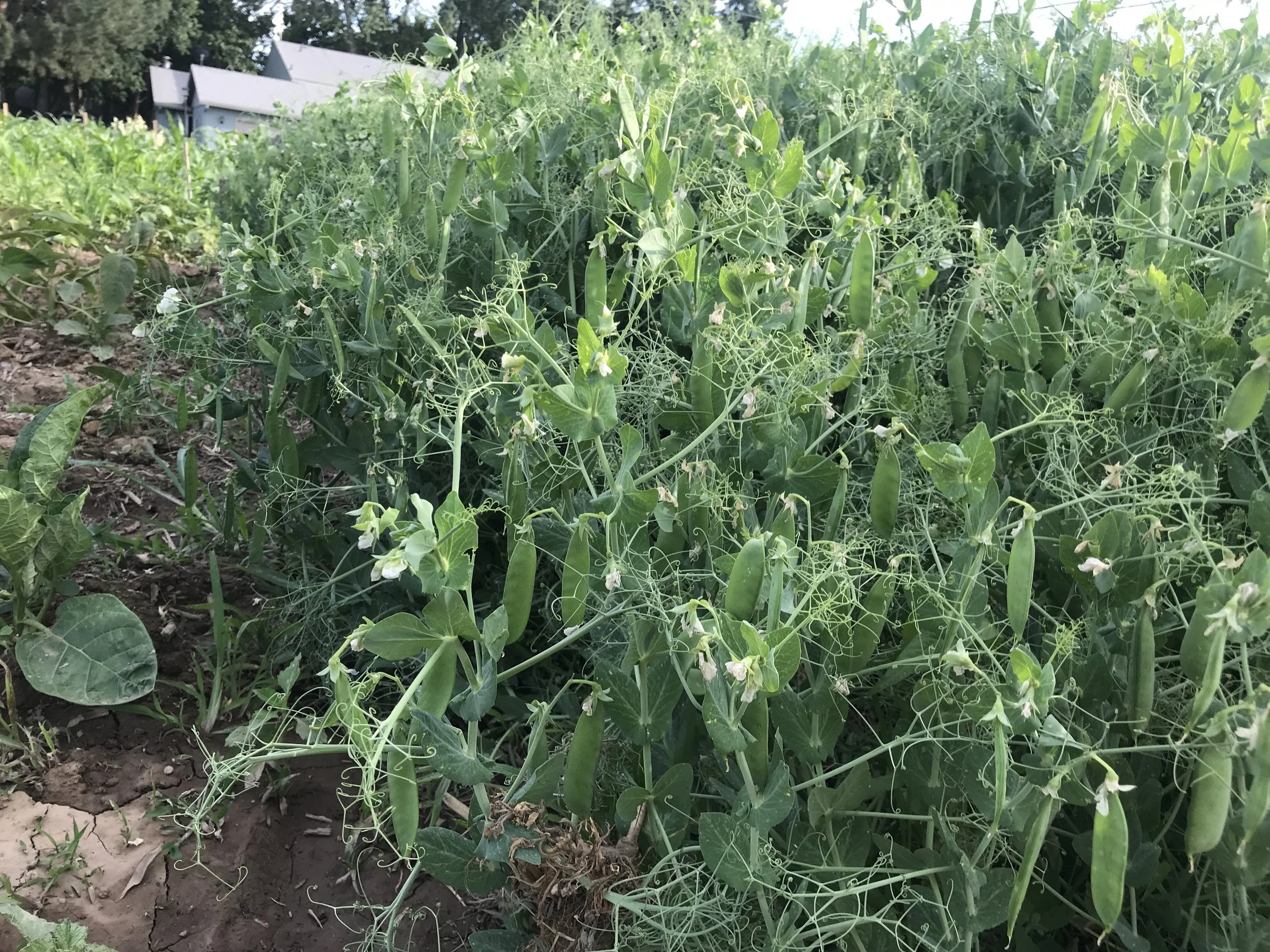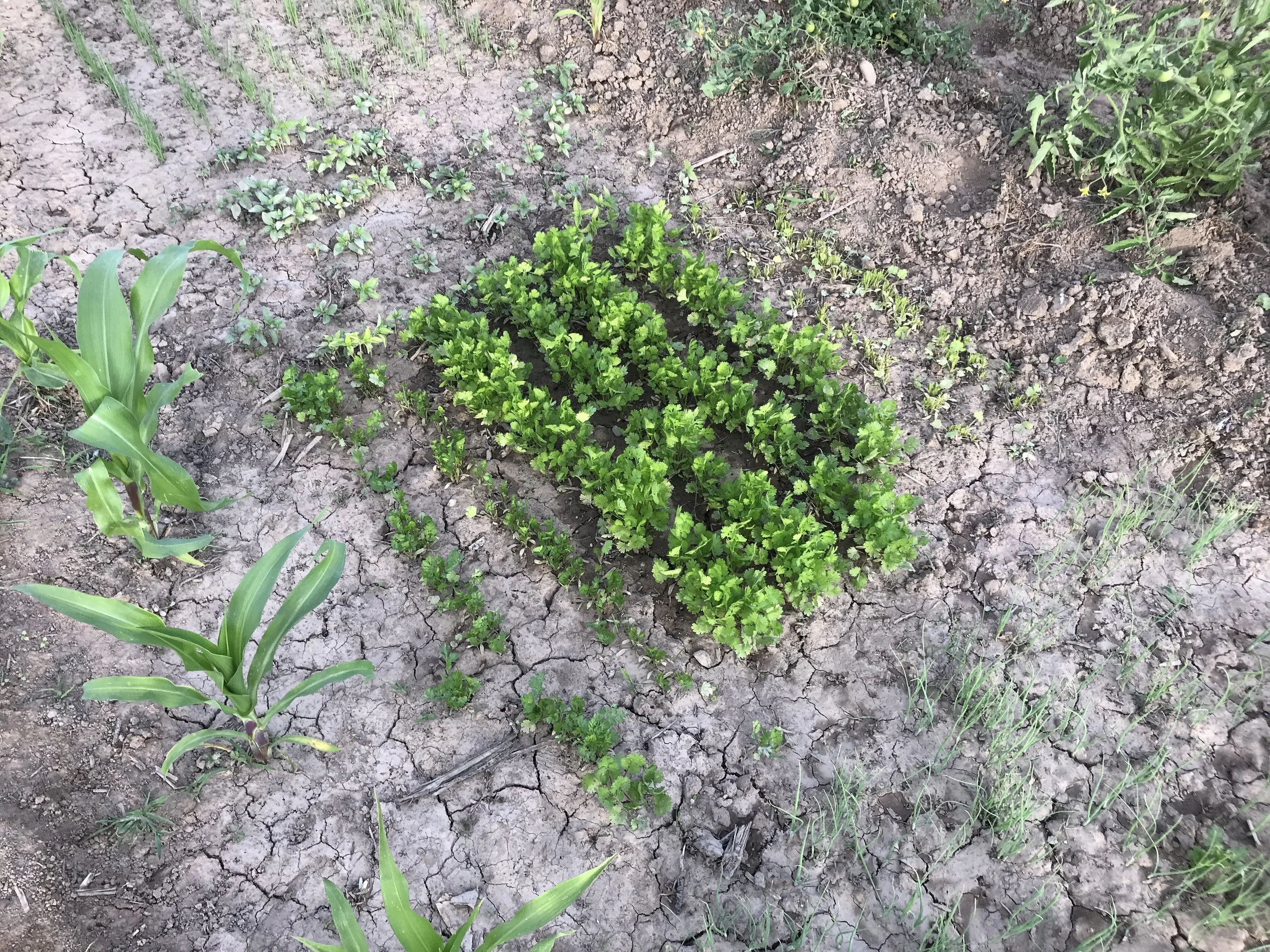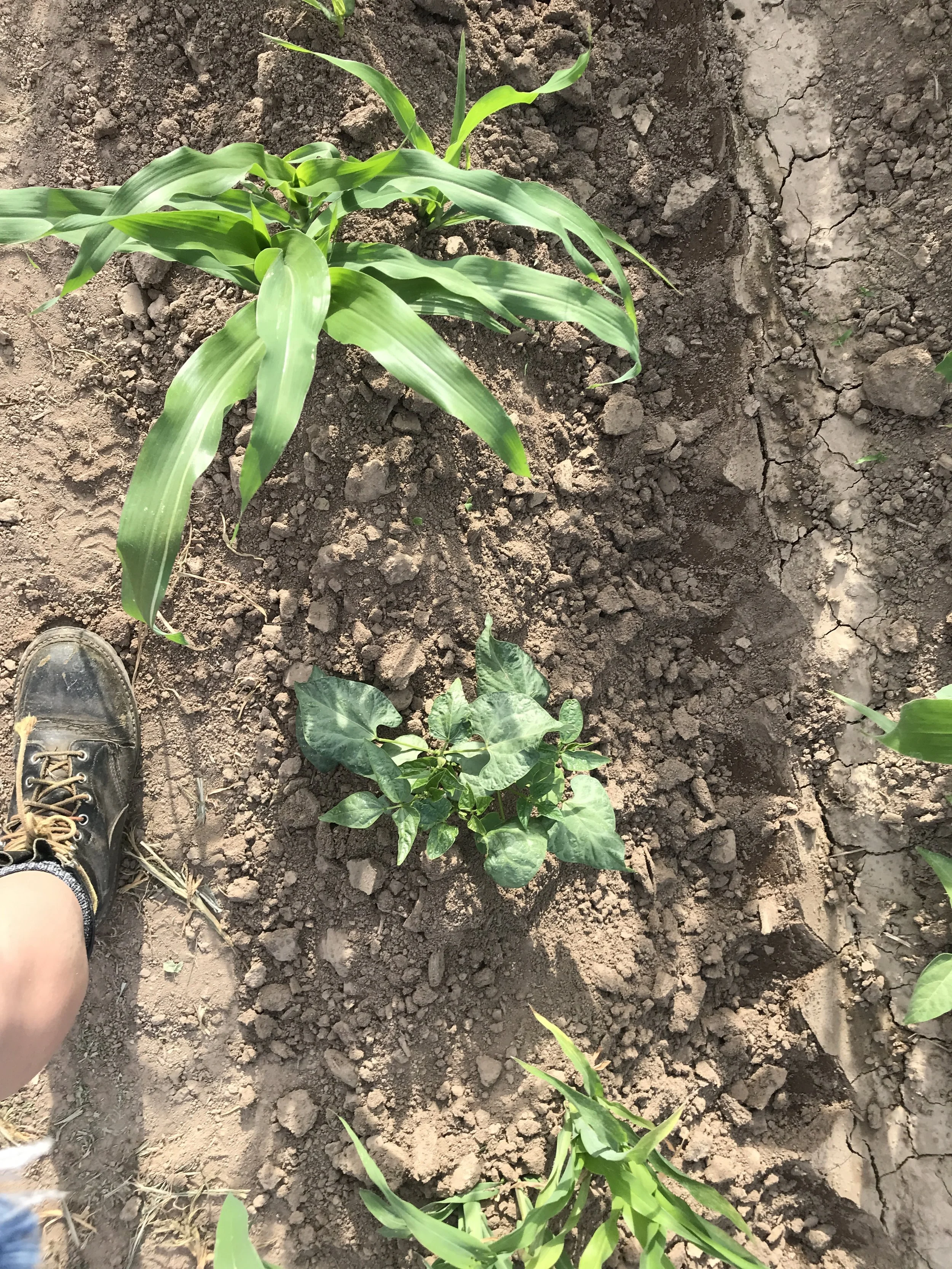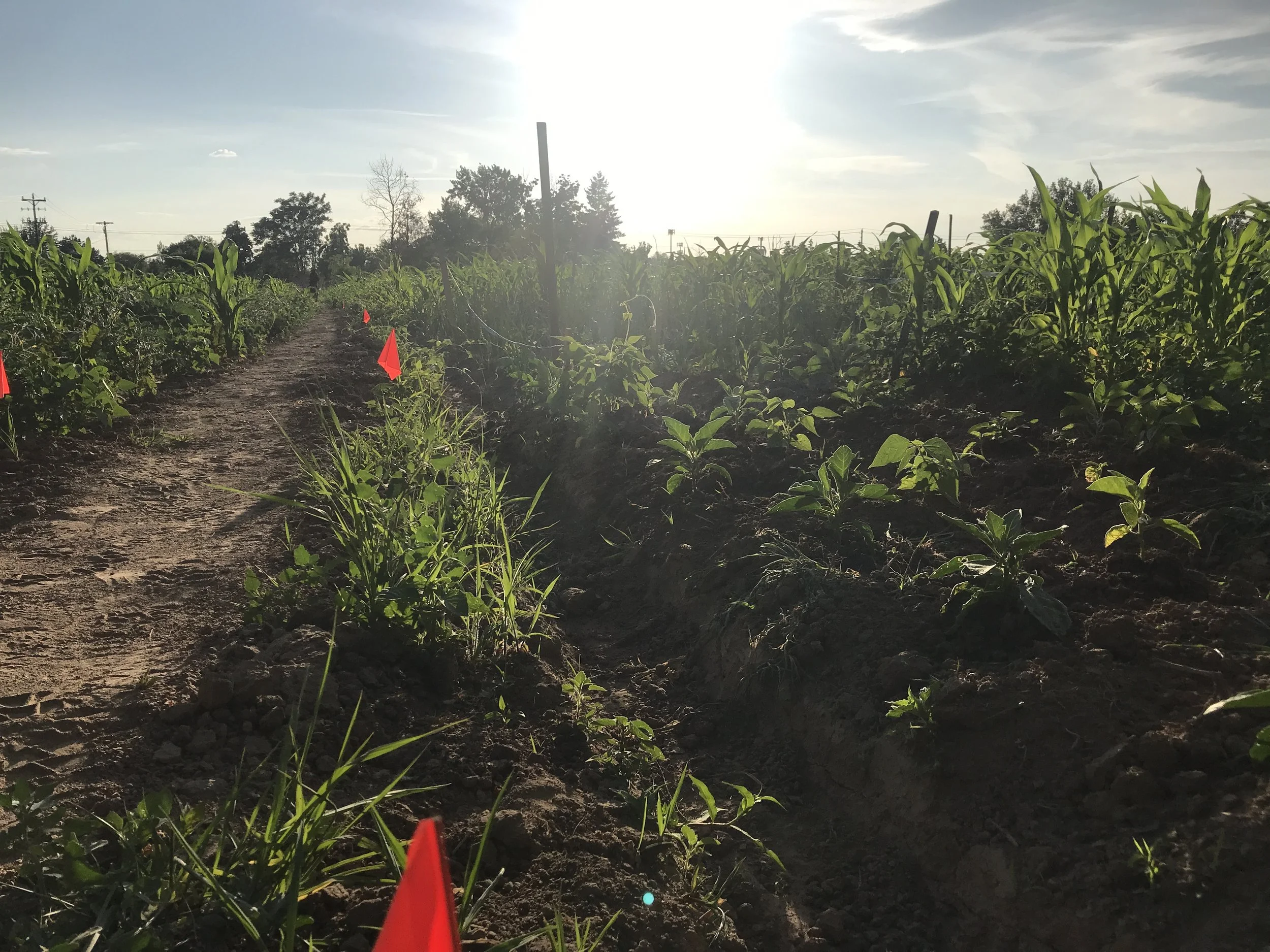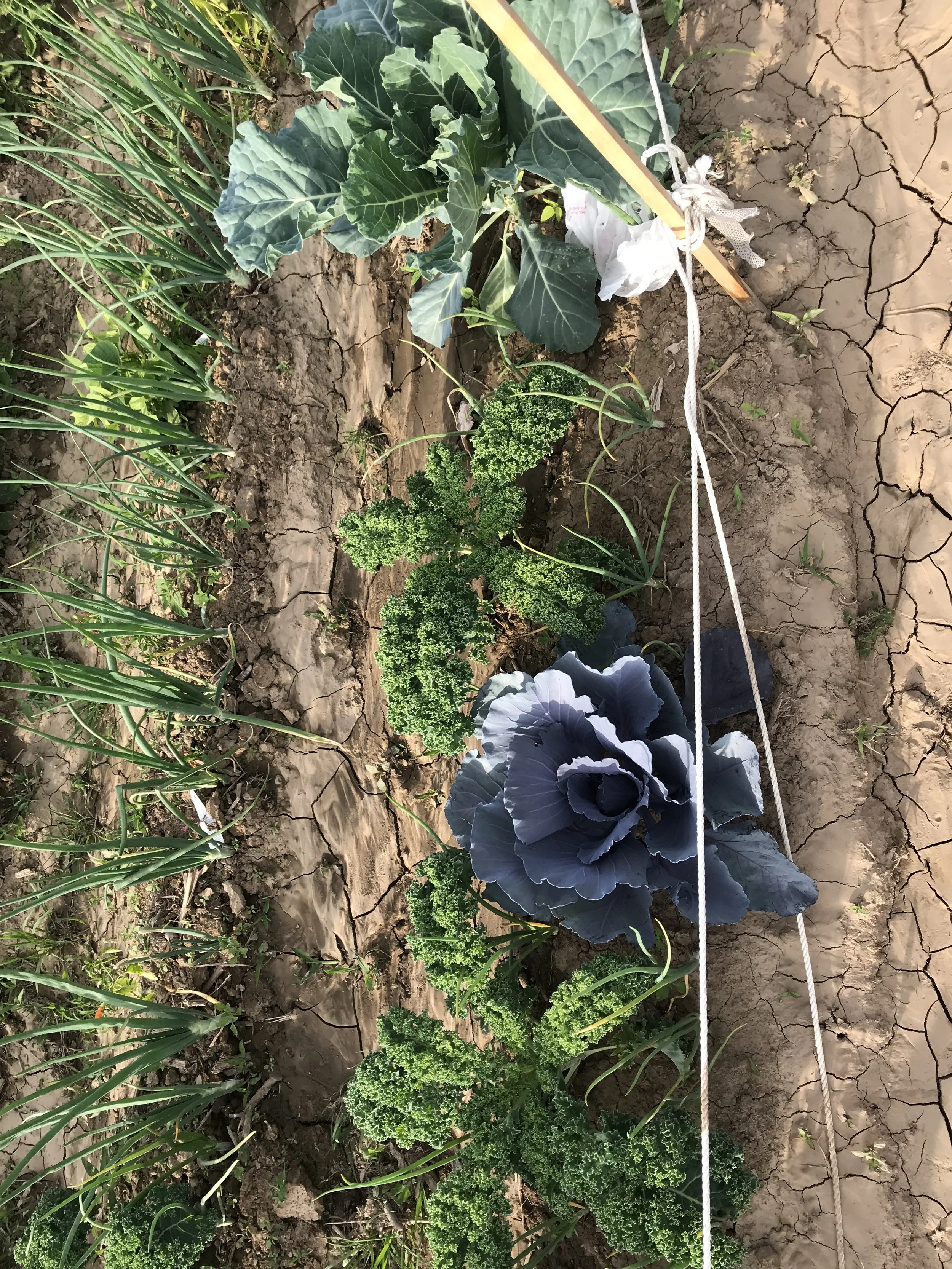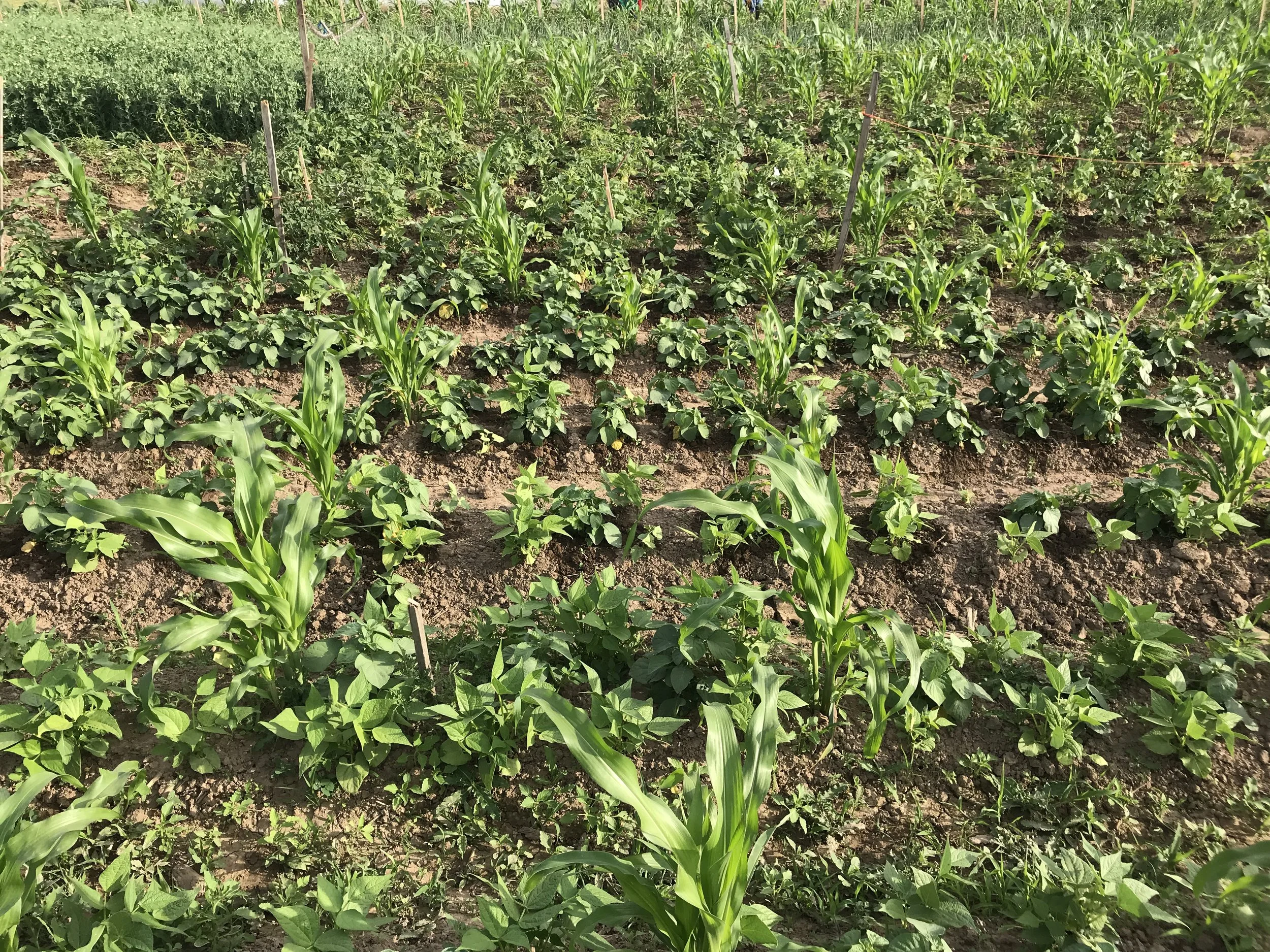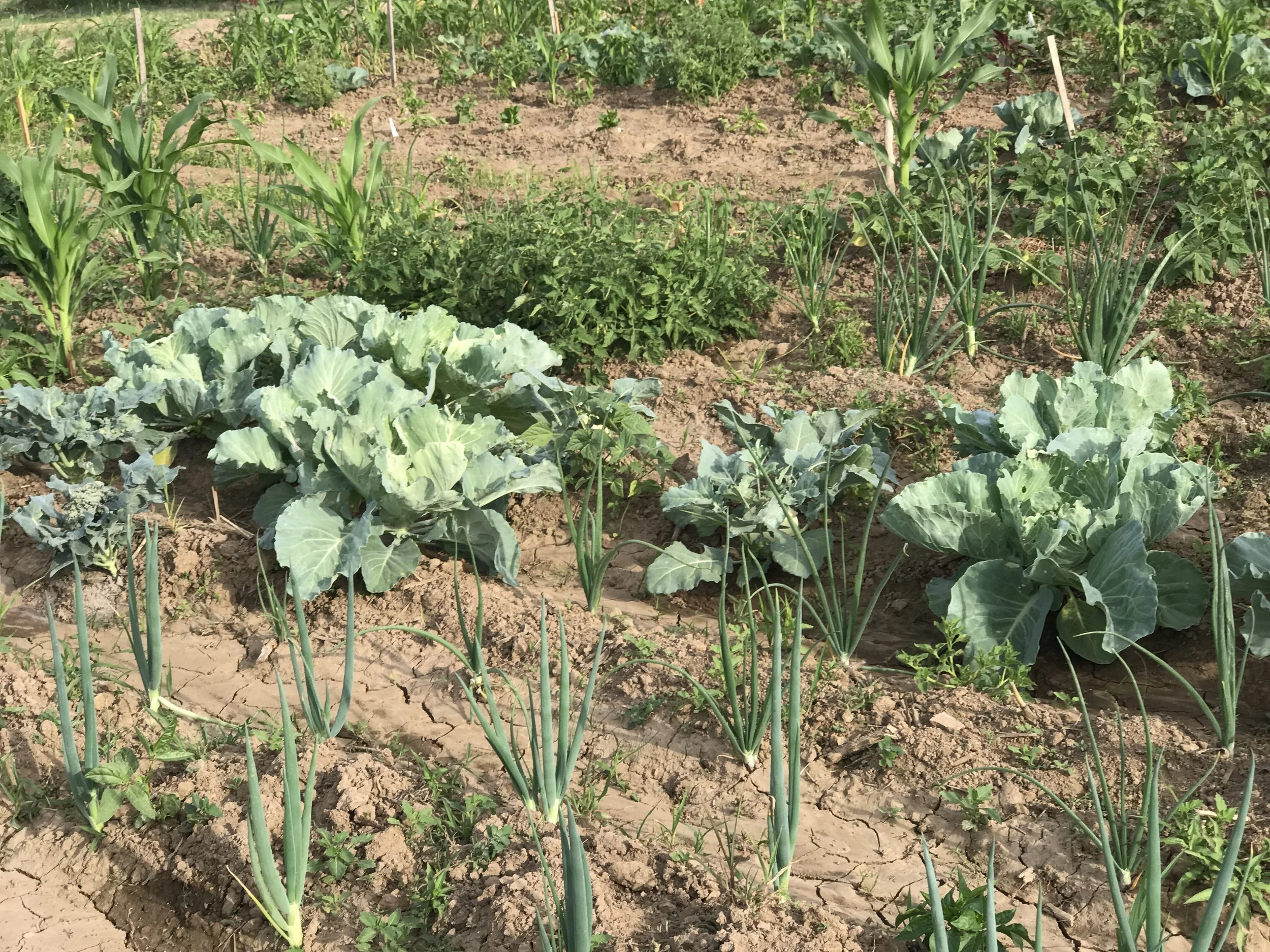Community Garden Spotlight: Liberty Park Tour Recap
June 26, 2025 | Hosted by TVCGCoop
On June 26th, members of the Treasure Valley Community Gardens Cooperative visited the Liberty Park Community Garden—and we left deeply moved by the care, effort, and collective spirit that sustains this space. With 120 garden plots and roughly as many families participating, it’s a site of extraordinary commitment, where people continue to grow food for their households and communities under challenging conditions.
This garden isn’t part of Global Gardens’ (GG) formal program—it exists because community members have kept it going. People sign up every year. David, Farm Manager at GG, conducted the tour and shared a powerful truth: he does about 1% of the work here.
“They do everything else,” he said, referring to the gardeners. That landed. We were all incredibly impressed.
What We Learned
Working with what appears to be a minimal budget for garden infrastructure, gardeners grow a lot—on average, each plot supports around 10 people. Most plants are started from seed at home, in personal greenhouses or under lights. The land is irrigated once per week by flood water, and the gardeners have figured out how to make it work—together.
With over 100 households, each making their own decisions, the collaborative structure here is remarkable.
Gardeners grow 7 to 8 different crops per plot, practicing low-till methods and leaving organic matter in the soil. They use chop-and-drop techniques, cover cropping, and expert interplanting to build fertility and retain water. While no formal yield is tracked, the abundance—and the care behind it—is undeniable.
Growing More Than Food
From Myanmar farmers delicately tending their plots with scissors, to a 70-year-old gardener who’s mastered a variation of the Three Sisters method, this garden is rooted in resilience, tradition, and deep cultural practice. One farmer—originally from Somalia and a graduate of the Global Gardens program—has cultivated this space for over a decade, continuing to provide for her immediate and extended family.
Many others have come through word of mouth, each bringing unique knowledge, techniques, and life stories. While squash bugs were reportedly present, from our view, the squash crops looked healthy and thriving.
During the tour, David mentioned that Global Gardens had received a report earlier in June of ICE presence at one of their farm sites. Neither he nor other program leadership witnessed the incident firsthand, but the mention stirred quiet concern. We tour attendees stood there thinking about what that means in and for our communities collectively.
For the purposes of this article I learned more about the backgrounds of the farmers Global Gardens supports. Many come from countries deeply affected by conflict and displacement: Somalia, Syria, the Democratic Republic of Congo, Afghanistan, and Myanmar. Ben, Program Manager at Global Gardens, emphasized that these farmers have all passed through some of the most rigorous background checks and vetting processes in the U.S. immigration system.
It was moving to witness the steady, skillful, and deeply meaningful work being done in this garden. And for those of us who value Boise’s identity as a sanctuary city, and who are literally humbled by the contributions of all who grow food here, the moment was a reminder of what it means to be "in community."
Opportunities and Hopes
One of the clearest needs expressed by some gardeners was access to more land. Several families are hoping to expand their growing space.
If you (kind reader) know of available land—especially near Kuna—even informal or seasonal opportunities could make a difference.
That said, Global Gardens staff emphasized they are currently at the limits of their capacity to manage additional sites. Any new opportunities would need to come with strong community support, flexibility, and coordination.
Another theme that surfaced—more from observation than direct request—was the need for improved translation and communication support.
At TVCGCoop, I’ve been reflecting on what it could mean to advocate for paid cultural liaisons or expanded translation access, especially as DEI programs face increasing cuts.
For community-based gardens like this one—where so much knowledge already exists, and where an incredible amount of labor is conducted with impressive skill—the gap in language services can still pose a barrier to connection, collaboration, and visibility.
For those passionate about success stories in our local food system, this is an area where focused energy and resource sharing could go a long way.
By supporting multi-cultural community garden efforts, we not only strengthen our food system—we strengthen our community.
Folks working to preserve their cultural heritage in spaces like this are doing so with tremendous skill, care, and a deep knowledge of working with the land.
It’s a way of being in community that’s truly inspirational. Gardening is hard work—and they’re absolutely rocking it.
Wise Water Use
We had a great discussion about our regional canal system and how this garden maximizes it—flood irrigating just once per week, while still producing an astonishing amount of food.
This sparked a real-time conversation among the garden managers visiting that day—from Grow More Good, Kleiner Park, Surprise Valley, and another nearby community garden that holds space for 40 resettled refugee families.
Most of our sites rely on drip irrigation, so we found ourselves wondering aloud:
How is it possible to grow this much food with just once-a-week watering?
As we stood in the shade, sharing reflections, I brought up something Leah Penniman shared in conversation with Dr. Ayana Elizabeth Johnson in the book What If We Get It Right?:
“For every 1% of soil organic matter restored, there’s the potential to sequester 8.5 metric tons of atmospheric carbon and hold 20,000 more gallons of water per acre.”
(Data via Leah Penniman, Farming While Black, as quoted in Johnson, What If We Get It Right?)
It added a powerful layer of understanding—this isn’t just about growing food. It’s about building living, resilient soil that holds water and carbon, right in the middle of the city.
And Yes, We’re Thinking About Food
While Liberty Park gardeners aren’t selling produce at market, food from other Global Gardens sites is available every Thursday at the West Bench Farmers Market, held 5–9pm at Global Lounge at the intersection of Ustick and Cole Road. It’s a wonderful place to connect with local growers, artisans, and producers—and to experience the wider local food system in action.
While you’re shopping for some epic locally grown produce, look for our TVCGCoop Booth there on the following dates:
August 7th
August 28th
September 11th
